Core couplings - TLM
This section describes Transmission line model core coupling, including the Single Phase TLM Core Coupling, Three Phase TLM Core Coupling, Four Phase TLM Core Coupling, and Five Phase TLM Core Coupling components.
TLM Core Coupling Introduction
TLM core coupling components are used to divide a circuit into sub circuits that will be simulated in separate cores of a single HIL device.

TLM technique models discrete reactive components as transmission-line sections known as stubs, each of which has its own inductance and capacitance. TLM stubs are one port devices; The inductor can be represented as short circuit stub, while the capacitor can be represented as open circuit stub. Every reactive component in the circuit can be replaced by TLM stub. Meanwhile, TLM links are two port-devices. TLM link also has its own capacitance and inductance. If capacitance is dominant, the link can be considered as capacitive. In that case, the characteristic impedance of the capacitive link can be written as Zlk=L/T. If inductance is dominant, the link can be considered as inductive and corresponding characteristic impedance can be written as Zlk=T/C. In the previous equations, T represents simulation step duration.
The TLM coupling component implementation is based on TLM links. Figure 1 shows structure of the TLM coupling component. Implementation of these components is based on principles shown in [1].
The bilinear discretization method is recommended since TLM coupling is based on this approach. But, if the TLM inductance(capacitance) is relatively small, trapezoidal discretization can be used. TLM coupling is in general more robust than Ideal Transformer coupling. TLM coupling in combination with bilinear or trapezoidal discretization method guarantees stability in most practical use cases, so there is no need for an additional stability analysis.
An existing inductor or capacitor can be replaced with a corresponding TLM coupling. In this case, the TLM coupling inductance/capacitance needs to be the same as the inductance/capacitance of the replaced element. If Embedded inductors/capacitors is enabled, the inductance/capacitance will be divided between the TLM and the embedded components. In that case, the best results are obtained. It is recommended to use TLM couplings in this way. Check Coupling component placement and parametrization - TLM based couplings for usage examples.
The main advantage of TLM couplings, compared to the ideal transformer based coupling components, is that TLM couplings are symmetrical components. Both sides of the TLM couplings are voltage sources behind an impedance. Because of this property, TLM coupling rotation is not important and they will not introduce any topological conflict in the circuit. The main disadvantage is that they will add some additional inductance or capacitance to the circuit. However, it is better to replace an existing inductor/capacitor with a TLM coupling in order to get better results. For more details about TLM coupling placement please refer to Coupling component placement and parametrization - TLM based couplings.
There are four TLM core coupling components in the library: Single Phase TLM Core Coupling, Three Phase TLM Core Coupling, Four Phase TLM Core Coupling, and Five Phase TLM Core Coupling.
For more details about coupling placement please refer to Coupling component placement and parametrization - TLM based couplings.
Ports
- a_in (electrical)
- Input port A for Single Phase TLM Core Coupling,
- Phase A input port for Three Phase TLM Core Coupling, Four Phase TLM Core Coupling, and Five Phase TLM Core Coupling.
- b_in (electrical)
- Input port B for Single Phase TLM Core Coupling,
- Phase B input port for Three Phase TLM Core Coupling, Four Phase TLM Core Coupling, and Five Phase TLM Core Coupling.
- c_in (electrical)
- Available on Three Phase TLM Core Coupling, Four Phase TLM Core Coupling, and Five Phase TLM Core Coupling.
- Phase C input port.
- d_in (electrical)
- Available on Four Phase TLM Core Coupling, and Five Phase TLM Core Coupling.
- Phase D input port.
- Available on Five Phase TLM Core Coupling.
- Phase E input port.
- a_out (electrical)
- Output port A for Single Phase TLM Core Coupling,
- Phase A output port for Three Phase TLM Core Coupling, Four Phase TLM Core Coupling, and Five Phase TLM Core Coupling.
- b_out (electrical)
- Output port B for Single Phase TLM Core Coupling,
- Phase B output port for Three Phase TLM Core Coupling, Four Phase TLM Core Coupling, and Five Phase TLM Core Coupling.
- c_out (electrical)
- Available on Three Phase TLM Core Coupling, Four Phase TLM Core Coupling, and Five Phase TLM Core Coupling.
- Phase C output port.
- d_out (electrical)
- Available on Four Phase TLM Core Coupling, and Five Phase TLM Core Coupling.
- Phase D output port.
- Available on Five Phase TLM Core Coupling.
- Phase E output port.
Properties
- Coupling type
- TLM coupling behaves as an additional inductor/capacitor in the circuit.
- Specifies type of the TLM coupling- inductive or capacitive.
- L
- Available if Coupling type is set to Inductive.
- TLM inductance [H].
- C
- Available if Coupling type is set to Capacitive.
- TLM capacitance [F].
- Embedded inductors/capacitors
-
In real-time/VHIL simulation, if enabled, embedded inductors/capacitors will be added to both sides of the coupling, as shown in Figure 2 and Figure 3.
-
In TyphoonSim, this property will not impact the component configuration, since the TLM coupling will be replaced with inductor/capacitor specified by Coupling type and L or C properties.
-
- TLM/Embedded components ratio
- Available if Embedded inductors/capacitors is enabled.
- Specifies how the impedance will be divided between TLM coupling and embedded components - Automatic or Manual.
- If the 'Automatic' option is selected, the ratio will be determined by the discretization method. If the 'Manual' option is selected, the ratio can be explicitly set to meet the model's requirements. It must be in range (0,1).
- Ratio
- Available if TLM/Embedded components ratio is set to Manual.
- Specifies TLM coupling to embedded components ratio. It must be in range (0, 1).
- Embedded inductors initial current
- Available if Coupling type is set to Inductive and Embedded inductors/capacitors is enabled.
- Initial current of embedded inductors [A].
- Embedded capacitors initial voltage
- Available if Coupling type is set to Capacitive and Embedded inductors/capacitors is enabled.
- Initial voltage of embedded capacitors [V].
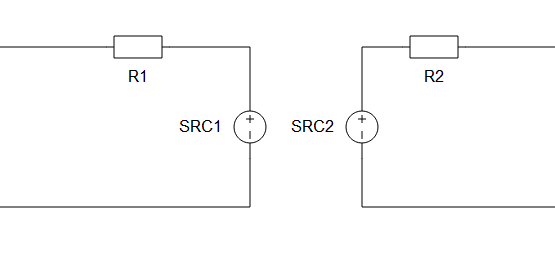
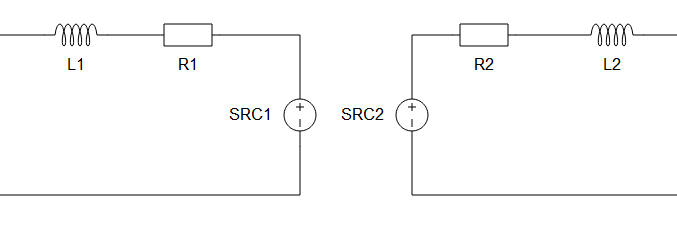
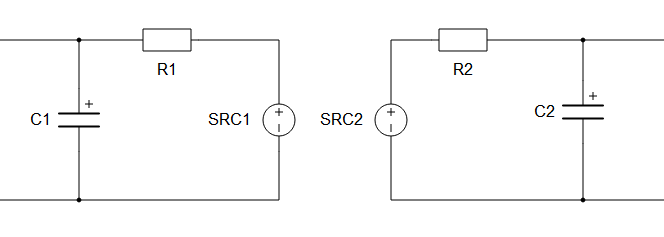
Single Phase TLM Core Coupling
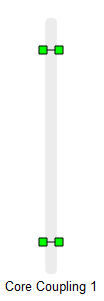
A Single Phase TLM (Transmission Line Model) Core Coupling component is based on a lossless transmission line model.
The number of variables exchanged between standard processing cores with Single Phase TLM Core Coupling is 1. For more details about the maximum number of variables between two cores please refer to Maximum number of communication lines between cores and devices.
Three Phase TLM Core Coupling component
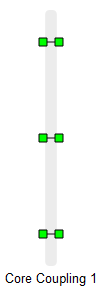
A Three Phase TLM (Transmission Line Model) Core Coupling component is based on a Single Phase TLM Core Coupling component.
The number of variables exchanged between standard processing cores with Three Phase TLM Core Coupling is 3. For more details about the maximum number of variables between two cores please refer to Maximum number of communication lines between cores and devices.
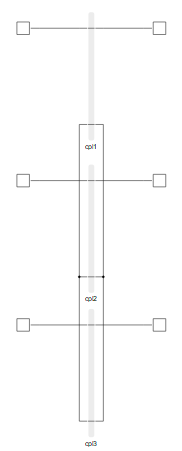
Four Phase TLM Core Coupling component

A Four Phase TLM (Transmission Line Model) Core Coupling component is based on a Single Phase TLM Core Coupling component.
The number of variables exchanged between standard processing cores with Four Phase TLM Core Coupling is 3. For more details about the maximum number of variables between two cores please refer to Maximum number of communication lines between cores and devices.
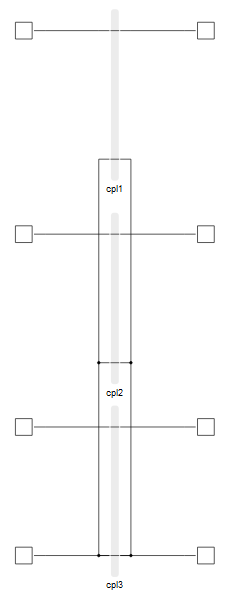
Five Phase TLM Core Coupling component

A Five Phase TLM (Transmission Line Model) Core Coupling component is based on a Single Phase TLM Core Coupling component.
The number of variables exchanged between standard processing cores with Five Phase TLM Core Coupling is 4. For more details about the maximum number of variables between two cores please refer to Maximum number of communication lines between cores and devices.

References
[1] S. Y. R. Hui, K. K. Fung, and C. Christopoulos. "Decoupled Simulation of DC-Linked Power Electronic Systems Using Transmission-Line Links". IEEE Transactions on power electronics, Vol. 9, No. I , January, 1994.